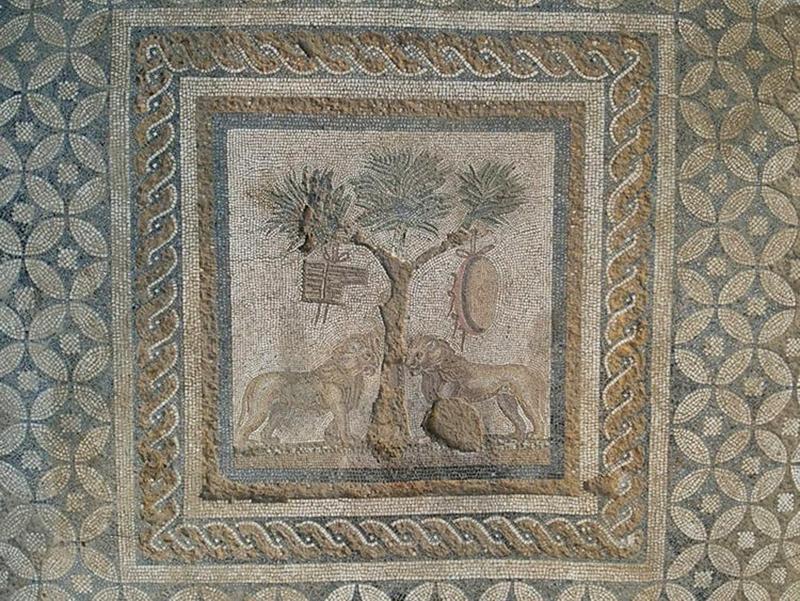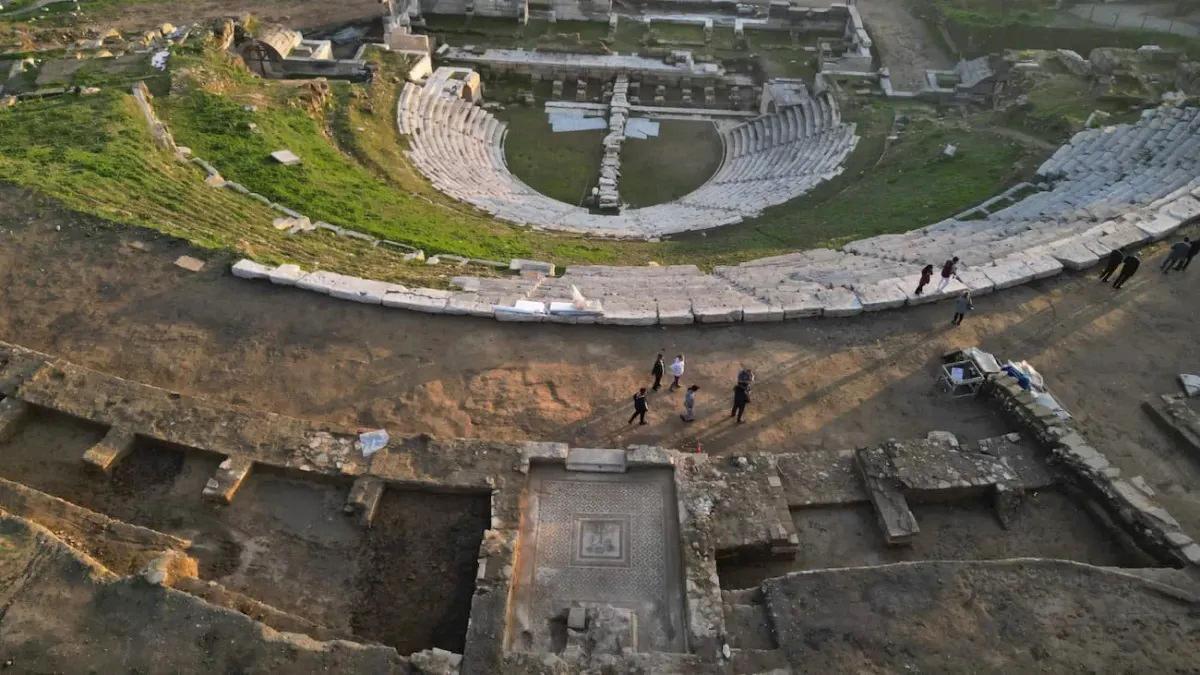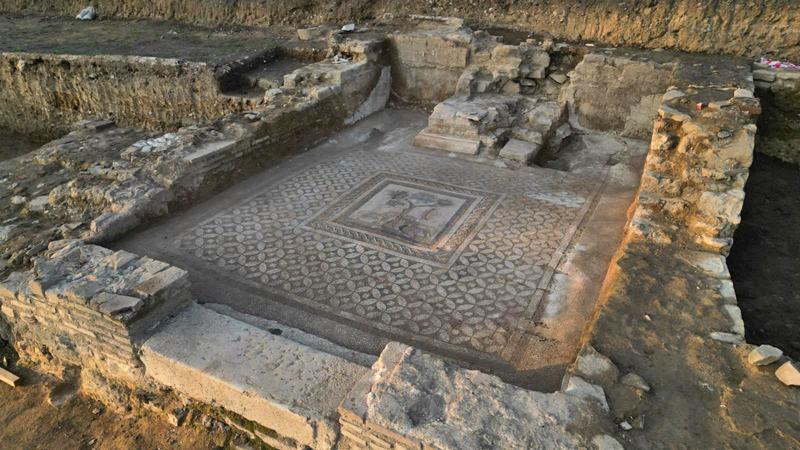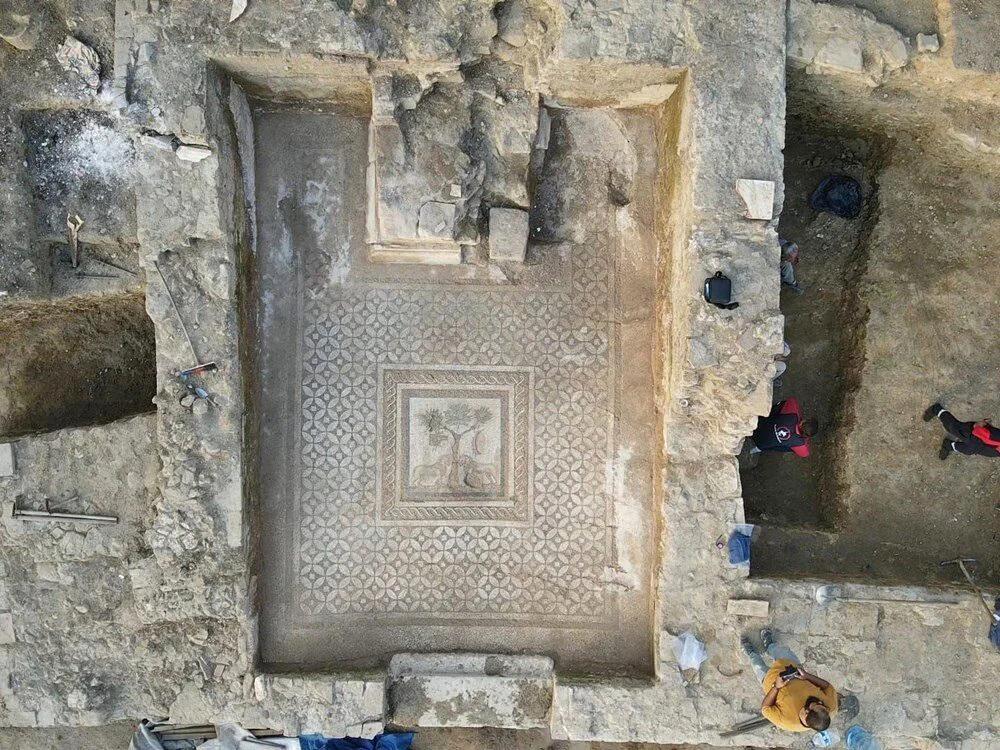Roman lion mosaic unearthed in ancient city Prusias ad Hypium
Archaeologists conducting excavations at the ancient city of Prusias ad Hypium in Konuralp, Turkey, have unearthed a well-preserved mosaic featuring lion motifs.
 Credit: Konuralp Museum
Credit: Konuralp Museum
The excavation, led by the archaeology department of Düzce University with the support of the Konuralp Museum and the Municipality of Düzce, has been ongoing for four years.
Prusias ad Hypium, once a thriving city in ancient Bithynia, annexed by the Roman Republic in 74 BCE, has been the focus of recent archaeological attention. The city, known as the “Ephesus of the Western Black Sea,” is revealing its rich history through artifacts uncovered by the dedicated excavation team.
The lion mosaic, discovered in a room connected to the portico above the ancient theater, adds to the list of remarkable findings, including a bust of Alexander the Great, statues of Medusa and Apollo, and various architectural remnants such as city walls, a gate, an aqueduct, and a Roman bridge.
 The ancient theater of Konuralp and the mosaic. Credit: Faruk Özlu/Düzce Municipality
The ancient theater of Konuralp and the mosaic. Credit: Faruk Özlu/Düzce Municipality
The newly unearthed mosaic measures approximately 4.51×6.42 meters, and its interior walls are adorned with marble plates set on a thick layer of mortar. The mosaic floor, a masterpiece of craftsmanship, consists of finely processed tesserae in white, blue, yellow, green, and brown colors, arranged in geometric patterns. The edges of the mosaic are framed with larger and more colorful tesserae, enhancing its aesthetic appeal.
RelatedStories
According to researchers, this room served as a late Roman cult site, specifically associated with the worship of Dionysus. Düzce Mayor Faruk Özlü stated: “We discovered a unique mosaic in Turkey. This mosaic is an important element of the Ancient Theatre here that has not come to light. Archaeologists state that it is a unique artifact.”
The scene depicted in the mosaic portrays two lions flanking a pine tree, with a drum (tympanum) and a pan flute suspended from the branches. Experts believe that this imagery is linked to the Dionysian cult, with historical evidence suggesting the room’s use in Dionysian processions. Silenus and maenads, participants in these processions, often played musical instruments like the tympanum and pan flute.
 Credit: Faruk Özlu/Düzce Municipality
Credit: Faruk Özlu/Düzce Municipality
Düzce Governor Selçuk Aslan shared the excitement on social media, saying, “During the ongoing excavations at Düzce Konuralp (Prusias ad Hypium) Ancient City, a well-preserved, rare mosaic depicting two lions looking at a pine tree with drums and a pan flute depicted on the tree branches.”
The ancient city of Prusias ad Hypium, originally established in the 3rd century BCE as Hypios, underwent transformations with the Roman conquest in 74 BCE, leading to its renaming and significant cultural influences. The archaeological remains, including the well-preserved ancient theater known locally as the Forty Steps, attest to the city’s historical richness.
 Credit: Ömer Ürer/AA
Credit: Ömer Ürer/AA
Local authorities express optimism that these archaeological treasures will contribute to positioning the area as a significant cultural and tourist destination.
Related Post
A shocking documentary proves that mermaids do exist
SHOCKING Revelation: Thuya, Mother of Queen Tiye, Was the Grandmother of Akhenaten and Tutankhamun—What Ancient Egyptian Secrets Did She Leave Behind?
Breaking News: Astonishing Discoveries at Karahan Tepe Confirm an Extraterrestrial Civilization is Hiding on Earth, and NO ONE Knows!
Breaking News: Researchers FINALLY Discover U.S. Navy Flight 19 After 75 Years Lost in the Bermuda Triangle!
NASA’s Secret Investigation: Uncovering the Astonishing Mystery of the UFO Crash on the Mountain!
Explosive UFO Docs LEAKED: Startling Proof That Aliens Ruled Ancient Egypt!